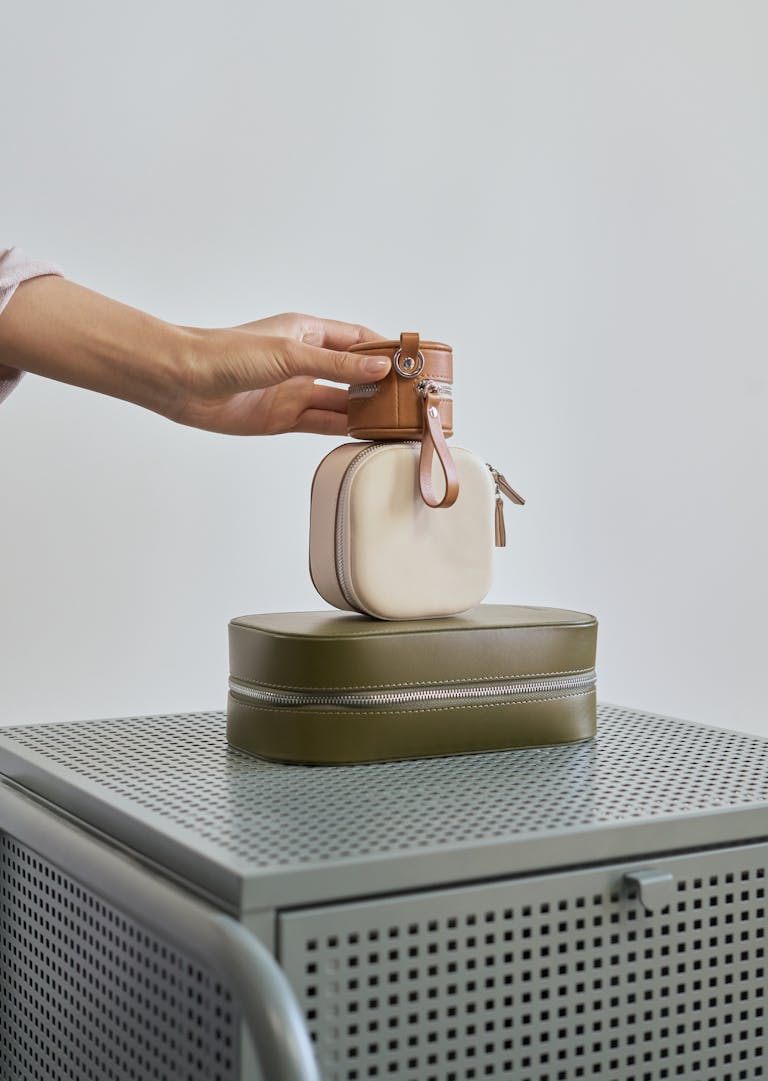Bag Making Problems: 6 Expert Solutions to Troubleshooting Common Issues
Struggling with bag making is a common issue for crafters and sewists alike. Whether it’s a mismatched seam or an uneven shape, these problems can be frustrating and may derail your creative projects. But don’t fret! Understanding and troubleshooting these bag making problems can turn challenges into satisfying solutions.
Imagine transforming those pesky issues into polished bags that you can be proud of. Here’s what you’ll learn: expert tips and tricks for diagnosing and fixing the most frequent bag making problems. Let’s dive into these practical solutions to enhance your bag-making skills and keep your projects on track!
If you’re seeking a handy video guide to complement this discussion, you might find Making a Bag to Solve All My Problems… (Pattern Available) #EDC insightful.
Understanding Common Bag Making Problems
When you’re crafting bags, several issues can pop up like uninvited guests. Whether caused by fabric quirks, sewing machine tantrums, or interfacing missteps, these problems can wreak havoc on your final product. Imagine the frustration of a beautiful tote ruined by fraying edges or structural collapse. Let’s explore some common hurdles and how to tackle them head-on.
Identifying Fabric Issues
Crafting a bag means choosing the right fabric. But did you know that your fabric choice can lead to headaches like fraying, stretching, or even tearing?
- Fraying: This is when the edges of your fabric unravel. Think of it like a sweater snagged on a nail, slowly unraveling with wear. To combat this, consider using fabrics with tighter weaves or applying a fray stopper.
- Stretching: Stretchy fabrics can be like a stubborn rubber band, refusing to keep their shape. Opt for interfacing to provide extra support.
- Tearing: Thin or poor-quality materials might tear under pressure. Always test your fabric by applying pressure to see if it holds up.
For more insights on fabric selection, check this expert guide on bag-making fabrics.
Common Sewing Machine Malfunctions
Your sewing machine is like the engine of a car; if it misbehaves, the whole process stalls. Let’s explore some typical problems:
- Skipped Stitches: This occurs when the machine fails to pick up the thread, much like a DJ skipping tracks at a dance party. Ensure your needle is sharp and compatible with the fabric.
- Thread Breaking: Often due to incorrect tension, think of it like tightening a guitar string too much – it’ll snap. Adjust the tension and re-thread your machine carefully.
- Bird Nesting: When threads bunch up like a bird’s nest, check the bobbin and ensure it’s seated properly.
For further tips on sewing machines, you might find this troubleshooting guide helpful.
Problems with Interfacing
Interfacing is the backbone of your bag, providing shape and support. But what if it goes wrong?
 Photo by 50k. jpe
Photo by 50k. jpe
- Peeling: If your interfacing peels away, it may be due to a cold iron – like trying to melt ice with cold water. Ensure your iron is hot enough and apply even pressure.
- Bubbles: Much like bubbles under a phone screen protector, improper application can cause these. Smooth it out carefully during application.
- Stiffness: Too stiff interfacing can make your bag seem robotic. Choose the right weight for your project to ensure flexibility.
For more detailed troubleshooting on interfacing, this blog post offers helpful insights.
Understanding these common bag-making problems helps in crafting bags that are not just stylish but also durable. By addressing these issues early, you’ll save time and produce bags that stand out for all the right reasons.
Troubleshooting Techniques for Bag Making Problems
Creating beautiful bags involves a mix of creativity, skill, and attention to detail. However, even seasoned bag makers encounter various challenges along the way. This section will provide practical solutions to common bag making problems. Whether you’re battling with fabric selection, sewing machine issues, or interfacing alignment, these tips will guide you to success.
Fixing Fabric-Related Issues
Choosing the right fabric is crucial for any bag-making project. The fabric you select can impact the durability and look of your bag. But how do you prevent common issues like fraying and stretching?
- Fabric Selection: Opt for fabrics that provide the right balance of strength and flexibility. A canvas or denim could be ideal for structured bags.
- Preventing Fraying: To avoid fraying, consider using pinking shears or applying a fabric sealant on the edges.
- Avoiding Stretching: Choosing a fabric with a tighter weave can prevent unwanted stretching. Also, pre-washing the fabric before sewing can help to reduce stretch.
Explore more detailed advice about sewing bag tips to prevent these issues before you start your next project.
Resolving Sewing Machine Problems
Encountering sewing machine troubles can make the bag-making process frustrating. But don’t worry, many of these issues are common and fixable:
- Check the Basics:
- Ensure the machine is threaded correctly.
- Double-check the needle type and size for your fabric.
- Tension Troubles:
- Adjust the tension settings slowly to find the right balance.
- Consult the machine’s manual for guidance if you’re unsure.
- Routine Maintenance:
- Keep the machine clean to prevent lint build-up.
- Lubricate moving parts regularly to maintain smooth operation.
For more insights, check this troubleshooting guide for sewing machines.
Properly Applying Interfacing
Interfacing adds strength and stability to your bags. Misalignment and sagging can be problematic if not applied correctly:
- Choosing the Right Interfacing: Consider whether you need fusible or sew-in interfacing based on your fabric type and desired finish.
- Correct Application:
- Follow the manufacturer’s instructions carefully.
- Use a press cloth when ironing fusible interfacing to prevent adhesive from sticking to the iron.
- Preventing Misalignment: Ensure you cut interfacing pieces slightly smaller than your fabric pieces to avoid bulk in seam allowances.
For more in-depth tips, you may find this article on interfacing methods for bag making helpful.
Navigating the challenges of bag making can be smooth with the right techniques at your disposal. Remember, practice makes perfect, and with time, these solutions will become second nature.
Advanced Solutions for Persistent Bag Making Issues
Bag making is as much an art as it is a skill, requiring attention to detail and a touch of creativity. Whether you’re a seasoned seamstress or just starting your sewing journey, issues can crop up that test your patience and skill. Here, we’ll explore advanced solutions to tackle persistent bag-making problems with confidence and finesse. With careful adjustments and a willingness to experiment, you can create beautiful bags that stand the test of time.
Adjusting Tension and Settings
One of the most common issues in bag making is uneven or loose stitches. These issues often stem from improper tension settings on your sewing machine. Adjusting the tension isn’t just about fiddling with dials; it requires a thoughtful approach. Did you know that tension discs on your sewing machine open and close depending on the position of the presser foot? Understanding these mechanics can help you gain control over stitch quality.
Here’s how you can adjust tension effectively:
- Identify the Problem: Look for signs like uneven stitches, loops, or thread breakage.
- Adjust the Dial: For loose stitches, tighten the top tension by turning the dial to a higher number. For tight stitches, lower the tension by decreasing the number.
- Test on Scrap Fabric: Always test new settings on a piece of scrap fabric before working on your bag to prevent any mishaps.
By mastering tension adjustments, you ensure that each stitch holds the fabric together securely, providing durability to your bags.
Utilizing Bag Patterns Effectively
Patterns are your best friend when it comes to constructing bags correctly. They provide a roadmap to guide you through the process. However, even experienced sewers might skip crucial instructions, leading to construction problems.
Follow these tips to utilize patterns effectively:
- Read Instructions Thoroughly: A pattern’s guidelines might include vital tips for those tricky corners.
- Measure Twice, Cut Once: Double-check your measurements before cutting to avoid costly errors.
- Keep Patterns Intact: Avoid folding patterns in ways that might ruin their integrity. Keep them stored flat or rolled.
Following patterns diligently can mean the difference between a bag that looks handmade and one that looks handcrafted with skill.
Experimenting with Different Techniques
The beauty of sewing lies in its adaptability. Each project offers a chance to try something new that can improve your craftsmanship. Exploring various sewing techniques can help you find your style and solve persistent bag-making problems.
Consider these different techniques for crafting unique bags:
- Use a Walking Foot: This is great for handling thick layers of fabric often used in bags.
- Explore Different Fabric Types: Each fabric behaves differently when sewing. Understanding these behaviors helps in selecting the right materials.
- Try New Stitching Patterns: Decorative stitches can add flair and are also useful in reinforcing seams.
By trying new approaches, you’ll not only solve issues but also enhance the overall appeal of your creations.
These advanced solutions equip you with the know-how to tackle the common yet challenging bag-making issues, ensuring each project is more successful and satisfying than the last.
Preventing Future Bag Making Problems
Ensuring a smooth bag-making process is like maintaining a car. You keep it running well through regular check-ups and by keeping up-to-date with the latest tips and tricks. Let’s explore some ways to keep those pesky bag making problems at bay.
Regular Maintenance of Tools and Equipment
Keeping your sewing machine in top condition is essential for flawless bag making. Regular maintenance is more than just a good habit; it’s your first line of defense against equipment hiccups that might disrupt your creative flow.
- Clean your machine regularly: Dust and lint can affect the performance of your sewing machine. Consider checking out this guide for tips on keeping your sewing machine spick and span.
- Oil the mechanics: Lubricating your machine prevents it from squeaking or jamming. Always use the appropriate sewing machine oil, not alternatives like WD-40.
- Inspect for wear and tear: Look for signs of damage on needles, threads, and other parts. Regularly replacing these can save you from a potential breakdown. For more information, check here.
 Photo by 50k. jpe
Photo by 50k. jpe
By making maintenance a priority, you’ll find your sewing machine humming like a well-oiled engine.
Continued Education and Resources
Even the best bag makers can hit a bump now and then. That’s why continued learning is vital. Staying informed with the latest techniques can be the difference between a simple fix and a frustrating day.
- Online Tutorials and Blogs: Sites like Scissortail Quilting offer tutorials that can enhance your skills.
- Community Forums and Social Media: Engaging with fellow artisans on platforms like Reddit or Facebook groups can provide instant solutions and recommendations. Check the Sewing Help forum for insights from experienced sewers.
- Workshops and Local Classes: Hands-on experience with a personal mentor can be invaluable. Keep an eye on your local community centers or craft stores for upcoming classes.
Investing time in learning ensures you’re always one step ahead, ready to troubleshoot whatever bag making problems may arise.
Conclusion
Diagnosing and resolving bag making problems is crucial for enhancing your crafting skills. By regularly identifying common pitfalls and employing the right solutions, you can ensure a smooth creative process. Whether it’s a material issue or a machine malfunction, understanding these obstacles makes you better prepared.
Keep experimenting and don’t hesitate to share your experiences with fellow bag makers. Engage in discussions and explore new techniques. Your journey into mastering bag making is full of opportunities for growth and innovation. If these solutions have sparked any new ideas or if you have tips to share, join the conversation in the comments below.
Thanks for investing your time in this exploration of bag making challenges. Your insights and feedback are invaluable, so feel free to get in touch or suggest topics for future posts.







